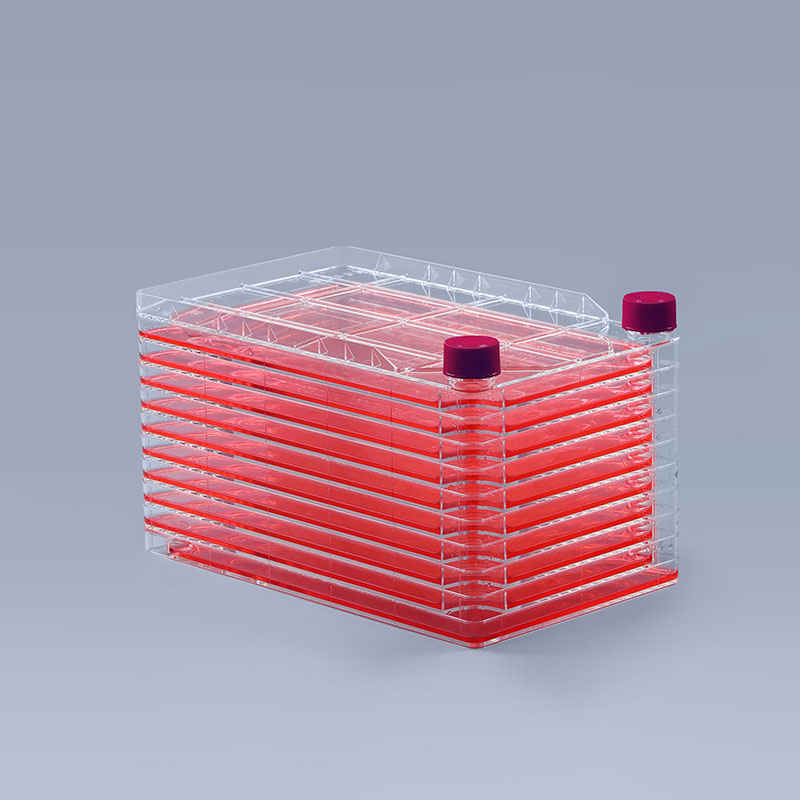The Cell Factory is a multi-layer structured vessel commonly used for cell culture and is suitable for adherent wall culture. Due to its unique design and ease of use, it is widely used in cell biology research, drug screening, production of proteins and vaccines. It can be used to culture many types of cells, including but not limited to the following categories:
1. Mammalian cells: It can be used to culture a wide range of mammalian cells, such as human cell lines (e.g. HEK293, HeLa, CHO, etc.), mouse cell lines (e.g. NIH/3T3, C2C12, etc.) and other mammalian cell lines.
2. Bird and insect cells: It can also be used to culture bird and insect cell lines, such as Drosophila S2 and Sf9 cells, chicken embryo fibroblasts, and so on.

3. Bacterial cells: Although the Cell Factory is primarily designed for adherent wall culture, in some cases it can be adapted to culture bacterial cells.
4. Primary Cells: Cell factories can also be used to culture primary cells, such as those from humans, mice or other animals, for the study of cellular processes related to development, physiology and disease.
It should be noted that there may be differences in culture conditions, media and culture temperatures for different types of cells, so before using a cell factory, it needs to be optimized and adapted accordingly to the requirements of the specific cell type to be cultured. Attention should also be paid to the selection of specifications, so that the appropriate specifications are selected according to the scale of culture.
The FAI climbed 5.9 percent year-on-year in the first 11 months of 2018, quickening from the 5.7-percent growth in Jan-Oct, the National Bureau of Statistics (NBS) said Friday in an online statement.
The key indicator of investment, dubbed a major growth driver, hit the bottom in August and has since started to rebound steadily.
In the face of emerging economic challenges home and abroad, China has stepped up efforts to stabilize investment, in particular rolling out measures to motivate private investors and channel funds into infrastructure.
Friday's data showed private investment, accounting for more than 60 percent of the total FAI, expanded by a brisk 8.7 percent.
NBS spokesperson Mao Shengyong said funds into weak economic links registered rapid increases as investment in environmental protection and agriculture jumped 42 percent and 12.5 percent respectively, much faster than the average.
In breakdown, investment in high-tech and equipment manufacturing remained vigorous with 16.1-percent and 11.6-percent increases respectively in the first 11 months. Infrastructure investment gained 3.7 percent, staying flat. Investment in property development rose 9.7 percent, also unchanged.
 English
English


















































